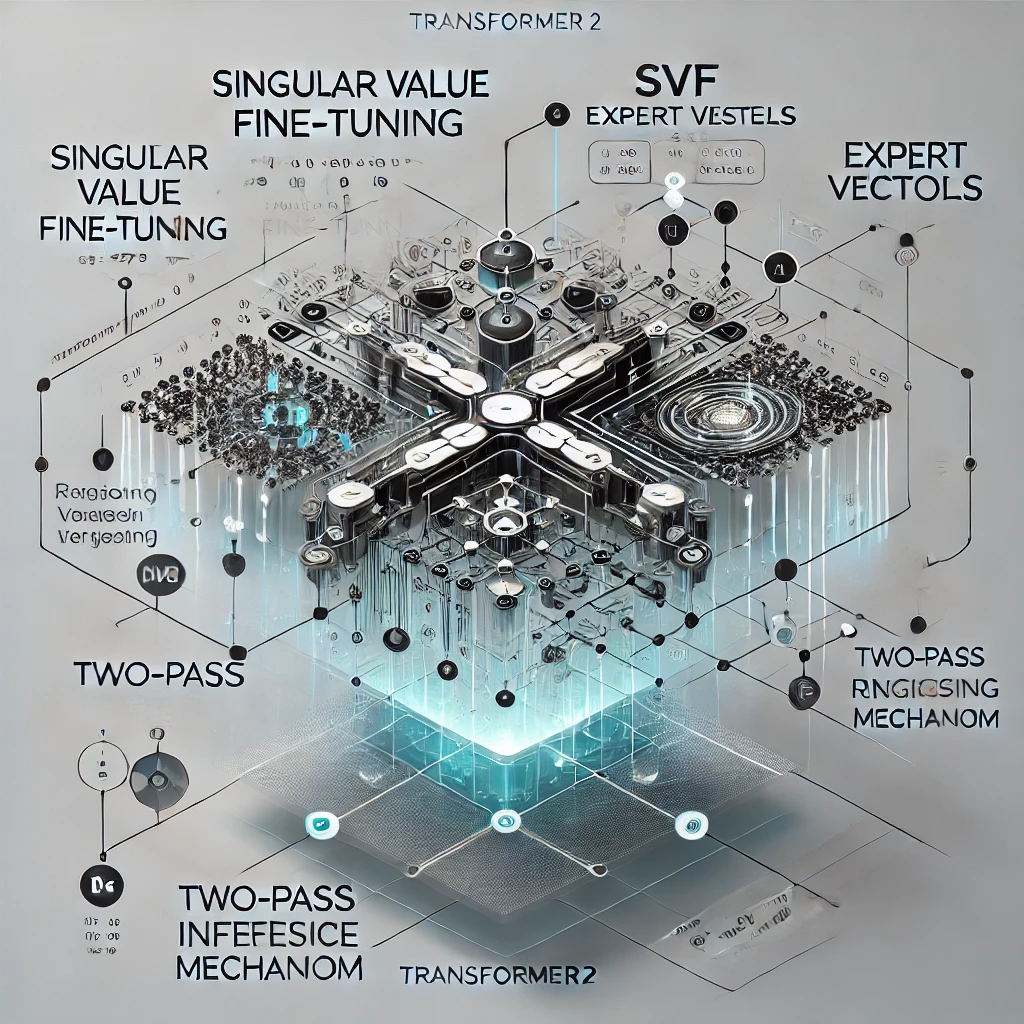By Sakana AI Researchers
In the fast-evolving field of Artificial Intelligence (AI), the challenge has always been scalability and adaptability across diverse tasks. Transformer2, a groundbreaking framework introduced by Sakana AI, takes a giant leap toward achieving real-time task adaptability in Large Language Models (LLMs). By introducing the concept of self-adaptive LLMs, Transformer2 aims to address inefficiencies in traditional fine-tuning methods and enable seamless, on-demand learning for unseen tasks.
What Makes Transformer2 Unique?
Transformer2 redefines adaptability by dynamically modifying the behavior of LLMs based on specific task requirements. This is achieved through two key innovations:
- Singular Value Fine-Tuning (SVF):
- A novel fine-tuning approach that focuses on adjusting the singular values of weight matrices.
- SVF significantly reduces computational costs while retaining full rank expressiveness, allowing the model to adapt quickly to new tasks with minimal parameters.
- This modular and parameter-efficient approach ensures that even small datasets can be effectively utilized for fine-tuning.
- Two-Pass Inference Mechanism:
- In the first pass, the model analyzes the input prompt to understand the task’s requirements.
- In the second pass, the framework dynamically combines pre-trained “expert vectors” to tailor the LLM’s behavior for optimal task performance.
Core Innovations of Transformer2
- Expert Vectors for Dynamic Adaptation: Pre-trained expert vectors specialize in distinct task domains (e.g., math, reasoning, coding). These vectors can be dynamically combined or selected to provide task-specific solutions, mimicking the efficiency of Mixture of Experts (MoE) systems.
- Adaptation Strategies: Transformer2 introduces three unique strategies for self-adaptation:
- Prompt Engineering: The model identifies task categories using pre-defined prompts.
- Classification Experts: A specialized classifier determines the best-fit task expert vector.
- Mixture-Based Adaptation: Expert vectors are dynamically combined to handle tasks requiring multi-domain expertise.
- End-to-End Optimization with Reinforcement Learning (RL):
- Transformer2 employs RL to fine-tune expert vectors, optimizing directly for task performance while avoiding overfitting.
- The use of RL allows the framework to adapt to diverse datasets, even when they lack detailed annotations.
Performance Highlights
Transformer2 has been rigorously tested across various LLMs and tasks, demonstrating superior adaptability and efficiency:
- Efficiency: Transformer2 achieves optimal task performance using significantly fewer parameters than traditional methods like LoRA, resulting in reduced computational costs and storage requirements.
- Versatility: Its modular design supports a wide range of applications, from coding and mathematical reasoning to visual question answering.
- Scalability: The framework seamlessly integrates with existing LLM architectures, making it a universal blueprint for self-adaptive AI.
Why Self-Adaptive AI Matters
Traditional LLM fine-tuning methods are resource-intensive and often static, limiting their ability to handle dynamic and diverse tasks. Transformer2 addresses these challenges by introducing:
- Real-Time Task Adaptation: Tailors LLM behavior on-the-fly for unseen tasks.
- Efficient Resource Utilization: Minimizes the computational footprint while maximizing task-specific performance.
- Modularity: Enables continual learning and reuse of pre-trained expert vectors without catastrophic forgetting.
Applications and Future Directions
The introduction of Transformer2 opens up new possibilities in AI-driven industries:
- Education: Adaptive models that provide personalized learning experiences.
- Healthcare: Task-specific AI tools for medical imaging and diagnostics.
- Finance: Dynamic models for interpreting financial data and predictions.
Future research aims to refine the adaptation strategies further and expand the framework’s capabilities to multi-modal tasks.
Conclusion
Transformer2 represents a significant milestone in the journey toward truly dynamic and self-organizing AI systems. By leveraging the power of SVF and adaptive inference strategies, it sets a new benchmark for task-specific performance and computational efficiency in LLMs.
For more details, check out the Transformer2 GitHub Repository.






Be First to Comment